Best Tasting Asparagus – Varieties That Taste Best When Grown Fresh
Asparagus is a nutritious food item. Among the best tasting varieties of asparagus, you have Precoce D’Argenteuil, Jersey Knight, Purple passion, Jersey giant etc.
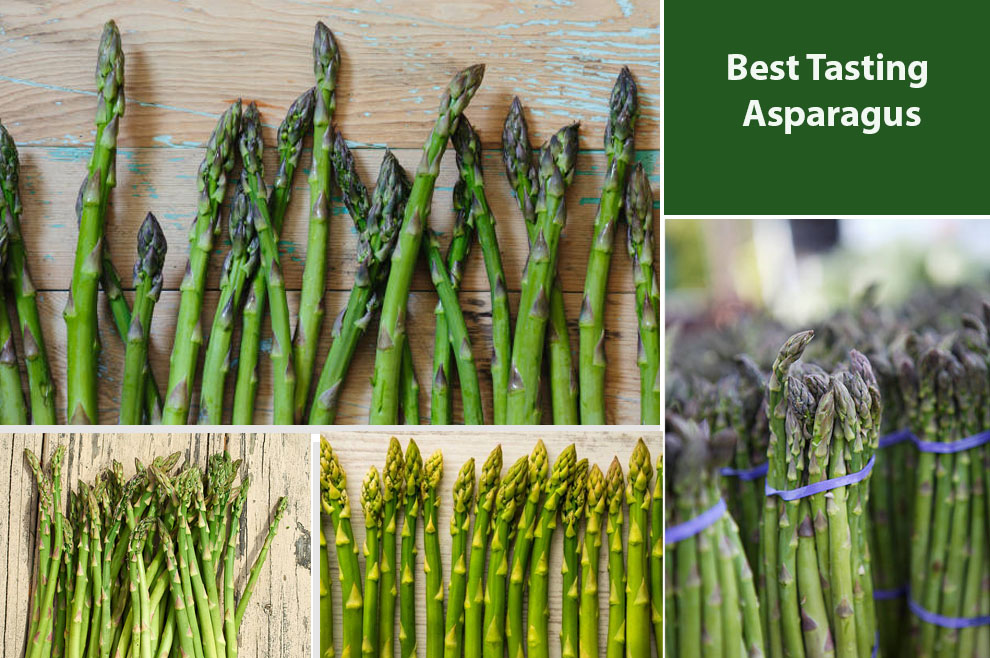
Asparagus is a part of perennial species. It is a delicious vegetable and is seen as the first sign of spring.
Once regarded as a delicacy, and often still, Asparagus is a delicious side dish or an appetizer in several meals. Several Asparagus varieties are available, but among the best tasting Asparagus, Precoce D’Argenteuil, White Asparagus, and Jersey Knight are the most popular among people.
There are some subtle taste differences in different Asparagus categories. Regardless of your chosen type, different asparagus varieties appeal to different tastebuds.
Which is The Best Asparagus Variety To Grow Taste Wise – Yummiest Of Them All!
- Precoce D’Argenteuil
- White Asparagus
- Purple passion
- Wild Asparagus
- Jersey Giant
- Jersey Knight
- Mary Washington
- Viking KB3 Asparagus
Here is a list of some delicious Asparagus types you can include in your garden and add to your meals:
1. Precoce D’Argenteuil
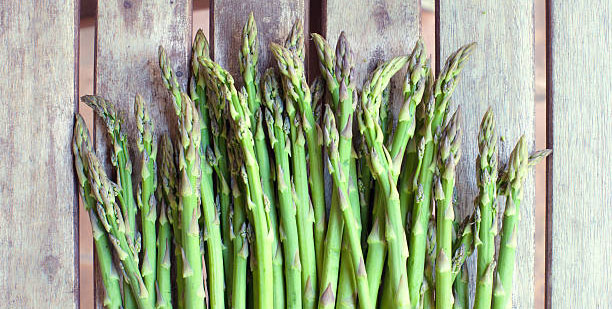
Originating in Europe, Precoce D’Argenteuil is an heirloom Asparagus variety that is still popular in Europe. It has a pale green color and hints of baby pink across its sweet stalks, completed with beautiful, rosy pink tips that add to its beauty.
A part of its name roughly translates to Early, implying that it is one category ready for harvest earlier than most other Asparagus varieties. Hence, it is one of the top picks for impatient gardeners.
You will see this early bloomer thriving in the second year itself. Precoce D’Argenteuil grows best in USDA hardiness zones five through eight up to three feet. It is the best tasting Asparagus variety, courtesy of its sweet taste. It is also tender when cooked.
2. White Asparagus
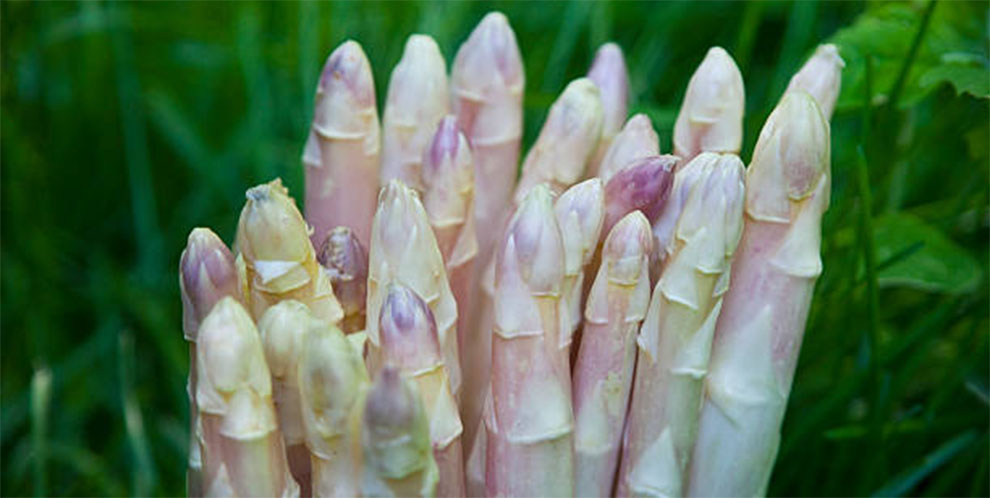
White Asparagus is almost similar to green Asparagus. The only difference between them is in color, attributed to the absence of chlorophyll in the white ones. They are grown underground. So, its color-producing chlorophyll never forms.
Moreover, the farmers shield it under black plastic or dirt mounts to ensure sunlight does not touch its spears. This process is known as etiolation.
In addition, the growers always harvest these Asparaguses before they ever get the chance to change their color to green. Since these Asparaguses demand extra attention and have a limited harvesting period, White Asparagus are relatively more expensive than green Asparagus.
The white Asparagus has a relatively sweeter and tender texture than the green ones, which also explains why people willingly pay a premium. They are also more fibrous than most other Asparagus varieties.
Since its spears are a little more robust and woodier than most Asparagus, peel the bottom 2/3rd of the plant before cooking. It tastes best with boiled potatoes and creamed soups.
People in Europe simmer the white Asparagus and drizzle them with melted butter or dip it in hollandaise sauce for consumption. You will find them in abundance in Germany and France, but it is a rarity in America. You can find them in specialty stores or canned.
3. Purple passion
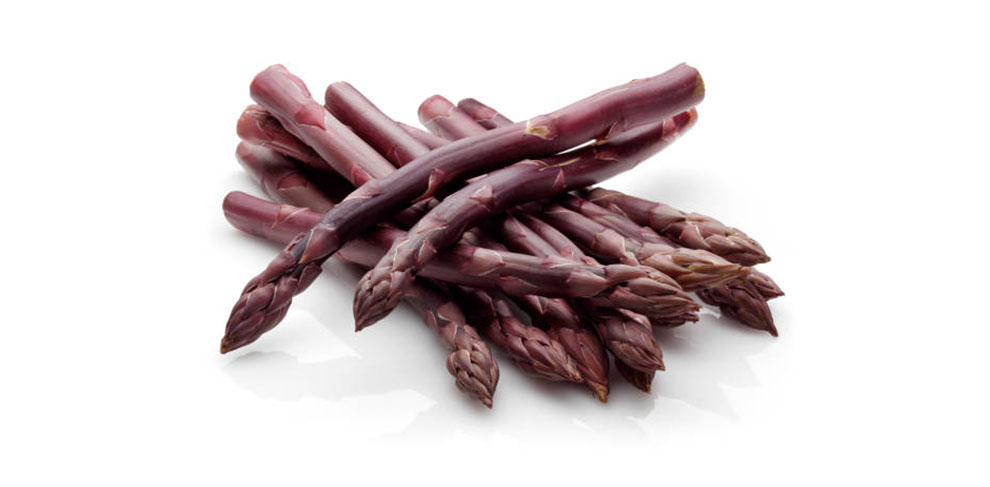
As is apparent, it is a widely grown, beautiful Asparagus that yields ultra-sweet purple spears. Its spears are thick and good but not as thick as the Jersey Giant. The spears are tender and have a purplish hue when harvested.
But, they lose some of their colors when cooked. Purple passion is all-male but has both female and male parts and is heat tolerant. Hence, you can get most spears before the summer results in ferns and tough spears. It is hardy in USDA zones three through 10.
Popularly grown in California, the Purple Passion has hints of green on its purple crowns and is referred to as the connoisseur’s selection of Asparagus, courtesy of its sweet flavor that becomes somewhat nutty upon cooking.
Its flavor is mild but is more tender and has a twenty percent higher sugar content than most other varieties. It is one of the best tasting Asparagus to grow, but you rarely see it in stores. It cooks well, freezes well, and is a popular salad inclusion.
4. Wild Asparagus
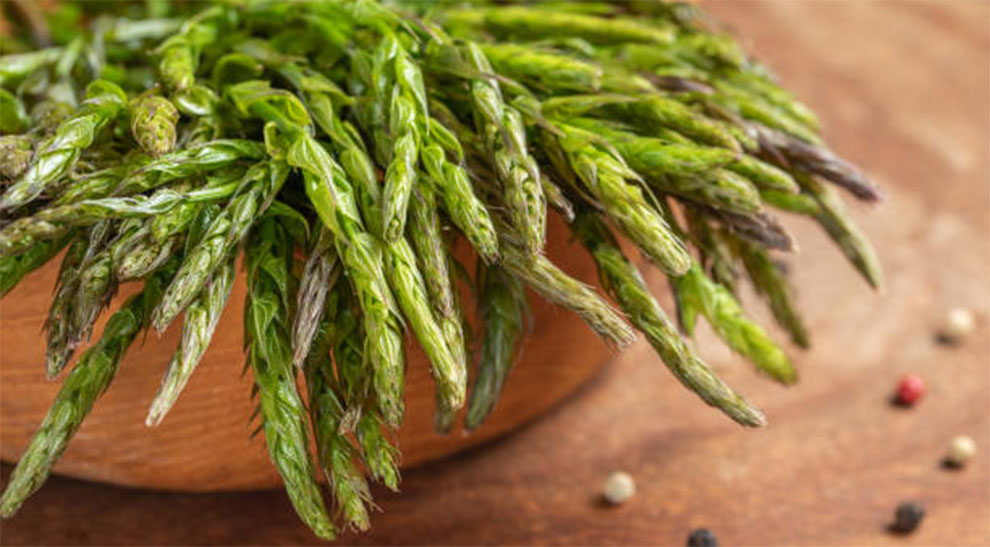
Wild Asparagus or Asparagus acutifolius is an evergreen perennial plant. Some even refer to this variety as the Chinese Asparagus or the lesser Asparagus. It is endemic in Western Europe and has a genetically different profile.
Moreover, it also tastes different from most garden Asparagus. Wild Asparagus has a more natural taste because it does not have a rich antioxidant or sugar content like the most cultivated varieties. As is apparent, it grows in the wild and is thinner and less productive than most varieties.
This variety has been collected since archaic days and is prevalent in the Mediterranean region. Primarily, it is its shoots that form the edible part. Because of its frugality, it is a viable crop for marginal rural areas.
Wild Asparagus finds heavy use in fold medicine as a diuretic and helps cure kidney-related issues. People cook it and use it in several dishes, but it is best enjoyed with eggs. People eat it with their poached and scrambled eggs, while some even prefer adding it to the omelets.
5. Jersey Giant
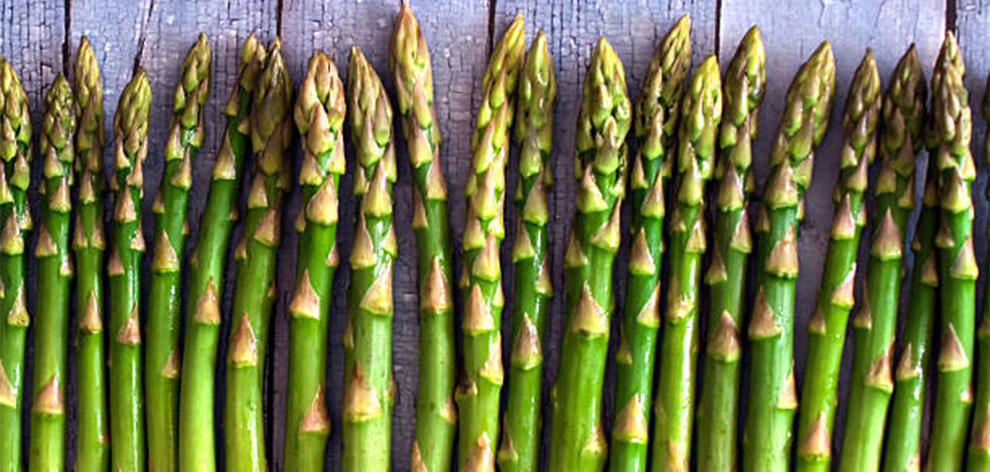
Jersey Giant is a green hybrid Asparagus and is one of the many cultivators from the Jersey Series. Typically, it grows between seven to nine inches and has a thick stalk that adds to its meaty, more intense taste than the other varieties, bagging the name Jersey Giant.
It is versatile and grows well in almost all environments, but it does the best in USDA hardiness zones four through six. The plant matures in late spring and yields multiple stalks for years.
Jersey Giant is a male-only hybrid with good disease resistance to fusarium – rust and crown rot. However, it is not the most heat-tolerant but is a good choice for colder climates.
Hence, you will have to harvest when its spears are shorter to avoid fern formation or tough spears. But, it has relatively thicker spears than Jersey Supreme and Jersey Knight cultivators, but not as much as the Jersey King.
Jersey Giant has a strong flavor that can grow up to nine inches long. Its stems are harvested from mid to late spring. Their pleasant taste makes it the best tasting Asparagus variety. People employ its stem in cooking for its tender texture and sweet flavor.
6. Jersey Knight
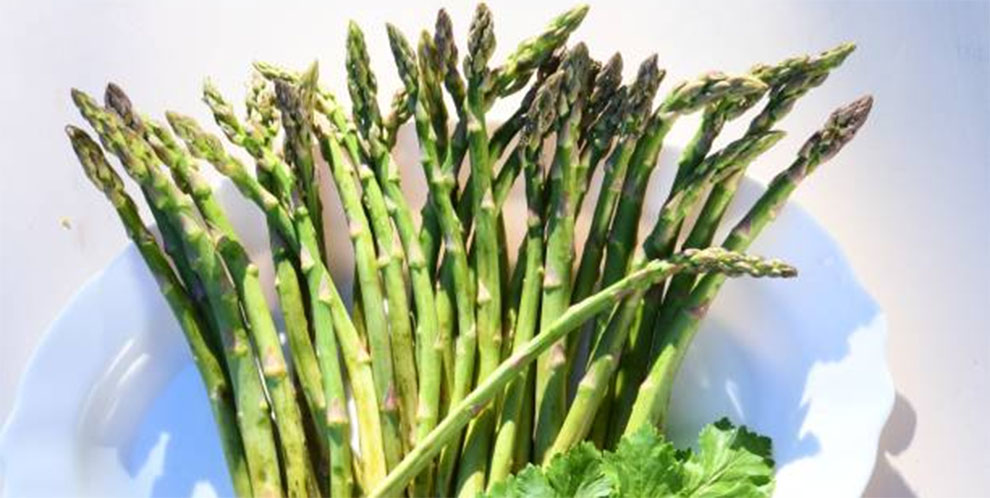
It is one of the more vigorous kinds of Asparagus. This hybrid plant yields nutrient-packed and large spears. Jersey Knight is a sturdy plant, resistant to several Asparagus diseases like fusarium wilt, crown rot, rust, and others.
It is typically a male type heat-tolerant variety. Thus, they can send up plenty of spears before they start to fern and become robust.
Jersey Knight is hardy and can grow in most climates. But, it does the best in USDA zones three through ten. So, they can tolerate temperatures as low as -40 degrees Fahrenheit. It grows best in alkaline or salty soils.
Farmers prefer growing it for its delectable flavor and ability to keep diseases and pests at bay. It has flavorful, smooth spears about two cm thick.
But, its spears are thinner than Jersey King, which has medium-diameter spears. It is ready for harvest slightly later than Jersey Giant. So, we recommend adding both to your garden as that can extend your season.
Jersey Knight is an excellent source of Vitamin C, B6, and A. It is one of the most prevalent Asparagus varieties. Hence, you will always find them at a grocery store near you. It is an easy-to-grow Asparagus and does best in well-drained soil with full sun.
You can plant the asparagus roots one foot wide and six inches deep and space the rows at least two feet apart. Whether you purchase this Jersey Series Asparagus or grow one in your home garden, its flavor will undoubtedly satiate you.
7. Mary Washington
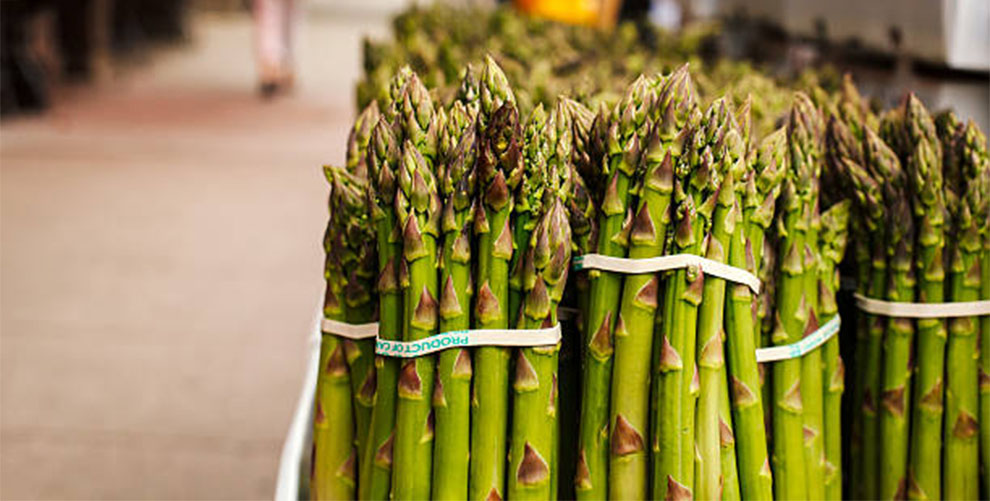
Also known as Asparagus Officinalis plants, Mary Washington is a standard cultivar. It is one of the most popular Asparagus varieties in America and has been around for over a century. It is an heirloom variety that yields corps for several years and thrives in USDA zones three through eight.
This variety does best in partial shade or full sun. The plant has high production and yields best in early spring, around the last frost. Hence, you must plant its roots six weeks before the first fall frost.
It is a female plant and one of the green Asparagus varieties that yield larger stalks quicker than most other Asparagus. It is one of the best tasting Asparagus and very easy to plant with beautiful green and feathery foliage.
Mary Washington is a perennial produce that hibernates during the winter months and remains so until it is ready to grow when the weather conditions are favorable again.
The plant yields deep green, long spears with pale purple tips. People love Mary Washington for its delicious flavor and uniform size.
8. Viking KB3 Asparagus
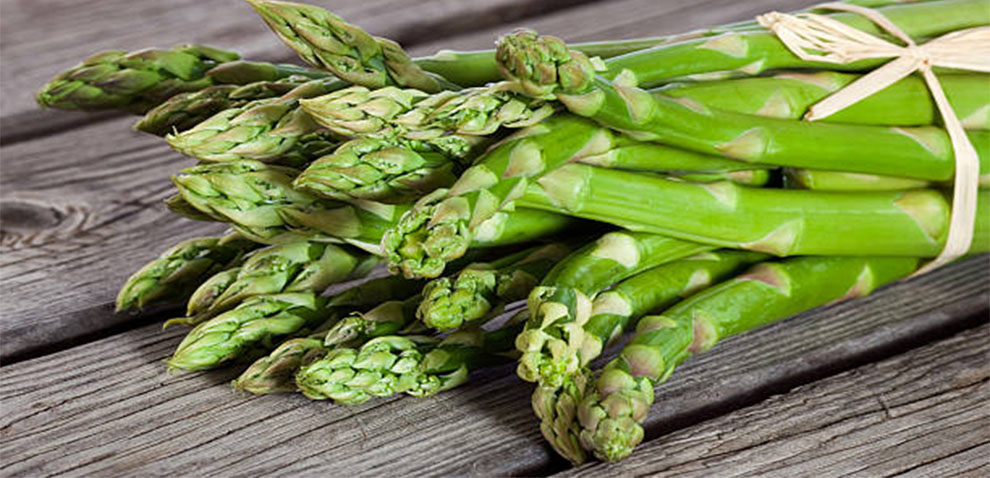
It is a type of Mary Washington Asparagus and one of the newest hybrid varieties. Viking KB3 is a sturdy variety that yields several stalks, making it a hugely popular and commercial option. Gardeners recommend harvesting them once their stalks are skinny.
It typically grows up to 10 inches and can also be harvested early. Viking KB3 has a meaty and delicious flavor. Since it is a versatile Asparagus, you can grow it in almost every climatic condition. It has both female and male types.
Related: Asparagus Lifespan | Best Asparagus Fertilizer |Growing Asparagus from Seeds
What Tastes Better, Thin or Thick Asparagus?
If aesthetics are your thing, you will desire thinner Asparagus over thicker ones. Generally, restaurant chefs also prefer them for their aesthetics and ability to cook faster than the thicker varieties. However, in our view, almost every Asparagus is simple to prepare and delicious regardless of its size.
In contrast to what most people say, the thinner stalks are firmer when cooked, and their fibers are more tightly packed. But that is not what Michigan Asparagus Advisory Board believes. They feel that the thicker stalks are of better quality. They are also richer in fiber.
The bottom line is, thick or thick, stalks of all sizes are delicious and nutritious. Asparagus is a rich source of vitamins A, B6, and C. They are also rich in potassium and folic acid. So, depending on your taste preference, you can make your selection.
What Is The Most Productive Asparagus?
If you need the most productive Asparagus, opt for the all-male types. Some popular all-male varieties include Jersey Supreme, Jersey Giant, and Jersey Knight. They yield almost three times more than the open-pollinated, older female or male varieties like the Mary Washington.
Is Purple Asparagus Healthier Than Green?
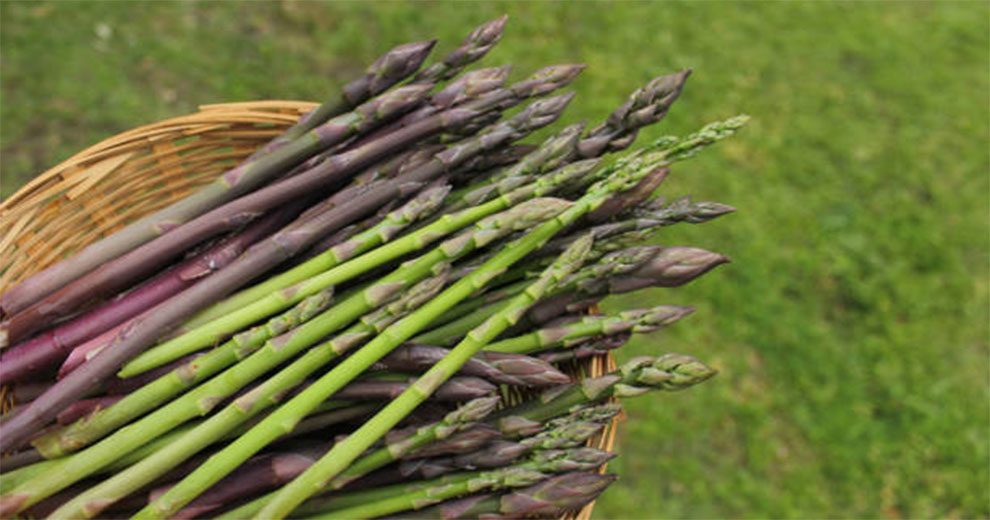
If you ask us which asparagus is best – green or purple, the antioxidant content in purple Asparagus is higher than that of green ones. These compounds help shield the cells from damage and lower the risk of several chronic diseases.
Purple Asparagus is also an excellent source of anthocyanins, a pigment that gives vegetables and fruits their color. But, there are some differences between the green and purple Asparagus, which make the former superior.
- Purple Asparagus has a relatively higher (almost twenty percent) sugar content than the green varieties.
- Their texture is less fibrous than green Asparagus.
- Green Asparagus also has a higher degree of Vitamin C, Calcium, Potassium, and Vitamin A than purple Asparagus.
So, depending on what you seek and expect from your Asparagus, you can choose.
Which Is Better, Male or Female, Asparagus?
Gardeners usually prefer male Asparagus over female ones because they produce more spears. It is because female Asparagus divide their energy and simultaneously use it towards yielding seeds. Care for your asparagus plants to have a handful produce.
Frequently Asked Questions
Ques 1. Is Asparagus healthy to eat?
Ans. Asparagus is a rich source of dietary fiber that aids in digestion. Insoluble dietary fiber works as a prebiotic that feeds healthy gut bacteria, while soluble dietary fiber washes off the bad cholesterol from the digestive system.
In addition, Asparagus is also rich in vitamins A, C, K, and E. It also has a high potassium and folate content. The folate content in the Asparagus helps with RBC formation. Also known as folic acid, folate helps cells divide and grow to their optimal size.
Folate is crucial during early pregnancy as it helps form baby organs and keeps spine and brain defects at bay.
Ques 2. How do you cook Asparagus like a pro?
Ans. Asparagus is a versatile spring vegetable, and you can cook it in multiple ways. Though some people consume it raw, it tastes best when cooked because the heat softens it and gives it a tender taste.
Grilling, frying, steaming, and boiling are the prevalent cooking methods. People usually serve it with hollandaise sauce, but you can enjoy it in several ways. Here are some popular ways to include Asparagus in your diet:
- Cook it and then chill it to consume it in the salad.
- Add it to your pasta to elevate the freshness
- Have it in your omeletes for a natural boost.
- Chop it into smaller pieces and consume it with stir-fried vegetables.
- Grill it with spices and enjoy it as a side.
- Roll it in egg whites, topple it in bread crumbs and bake it with fries.
- Sprinkle it with cheese and bake it as a snack.
Ques 3. Can I plant different varieties of Asparagus together?
Ans. Yes, the best tasting Asparagus to grow can be planted together. It helps you achieve a longer harvest season since different asparagus categories have varying harvest times.
